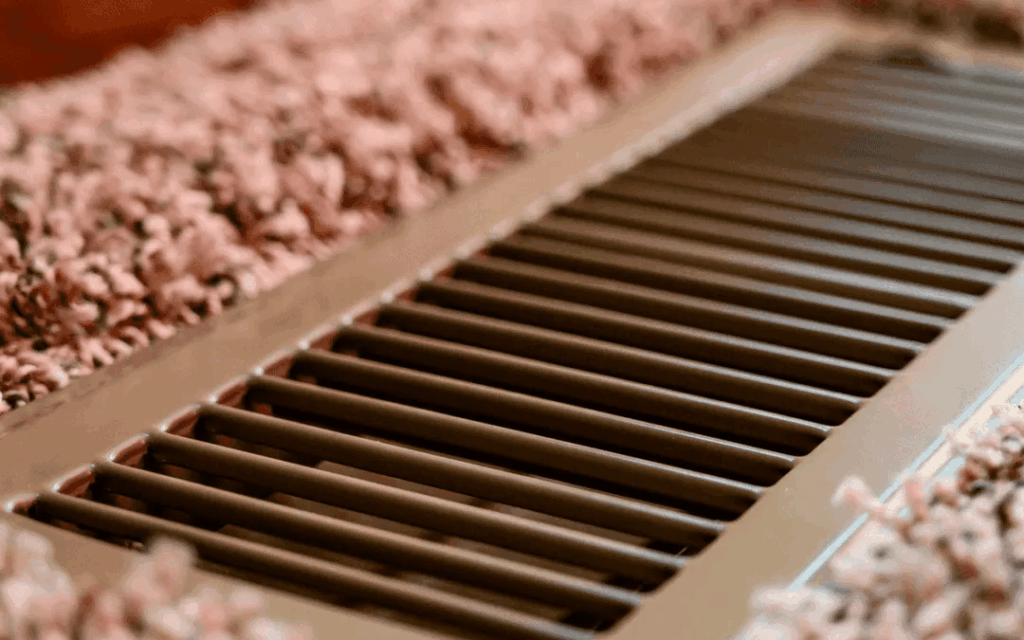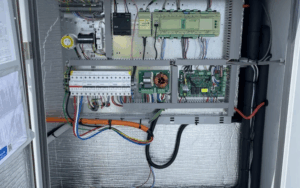
Keeping your heater in good nick isn’t just about avoiding breakdowns—it delivers quieter operation, lower bills, safer air, and a longer life for the whole system. Whether you rely on reverse‑cycle, gas space heaters, or full-blown ducted heating, routine check-ups pay off in ways most households don’t notice until they skip them.
Below, we unpack the real-world upsides so you can see why a yearly service is more than a box-tick.
Lower Energy Bills Without Sacrificing Comfort
Regular maintenance trims the fat from your energy use. A clean, well-calibrated unit doesn’t need to slog away to hit the same temperature.
How servicing boosts efficiency:
- Filters and coils are cleared, so airflow improves and run times drop.
- Thermostats and sensors are recalibrated, preventing overshooting your set point.
- Duct leaks are spotted and sealed, stopping warm air from bleeding into the roof cavity—especially critical for ducted heating systems.
- Motors draw correct amperage when bearings are lubricated and belts are tensioned properly.

Fewer Surprise Breakdowns in Peak Winter
A tune-up catches the “almost failures” before they turn into “no heat tonight.” Technicians see patterns you won’t, and they can swap parts before they strand you.
Prevention in action:
- Cracked igniters, fatigued capacitors, and wobbly fan blades are replaced proactively.
- Error codes in the controller history point to intermittent faults you haven’t noticed yet.
- Early warning signs (odd vibrations, sluggish start-ups) are investigated instead of ignored.
Longer Lifespan for the Whole System
Mechanical and electronic components last longer when they’re kept clean, cool, and correctly adjusted. Servicing slows the wear that would otherwise cut years off your unit’s life.
What regular care slows down:
- Heat stress on boards and wiring caused by dust insulation.
- Bearing wear from running under load with restricted airflow.
- Corrosion in coastal or humid areas when moisture traps are checked and cleared.
- Constant short-cycling that chews through starters and valves.
Safer Operation—Especially With Gas and Combustion Units
Safety is invisible when things are working. Servicing makes sure it stays that way, particularly for gas-fired systems where combustion must be spot-on.
Safety wins you don’t see but definitely want:
- Heat exchangers are inspected for cracks to stop carbon monoxide entering ducts.
- Flues and vents are cleared of nests, rust flakes, or blockages.
- Electrical wiring is tightened so terminals don’t arc and overheat.
- Safety switches and sensors are tested to prove they trip when they should.
Better Indoor Air Quality, Fewer Allergies
When your heater circulates air, anything inside it can end up in your lungs. A serviced system delivers cleaner air, and that’s noticeable if you’ve got asthma, allergies, or kids in the house.
Maintenance that helps you breathe easier:
- Filters are replaced or washed before they clog and bypass.
- Dust and pet hair are cleared from fans and housings, so they don’t aerosolise.
- Mould-prone components are checked for moisture build-up and treated.
- Ducts are inspected for tears or damp spots that harbour spores.
Quieter, Smoother Operation (Goodbye Rattles and Whines)
Noise is one of the first things to creep in when components go off-spec. Maintenance tightens and lubricates everything so your system hums along quietly.
Where the racket comes from—and how servicing fixes it:
- Loose screws and panels vibrate until they buzz.
- Worn bearings squeal or hum at certain speeds.
- Unbalanced blower wheels thump each start-up.
- Air leaks in ducts whistle like a badly sealed window.
Predictable Budgeting and Easier Warranty Claims
If you know a service is coming each year, you can budget. And if something big does fail, you’ve got paperwork that keeps manufacturers and insurers onside.
Financial clarity from routine servicing:
- Small scheduled costs beat surprise thousand-dollar repairs.
- Service records meet warranty conditions for many brands.
- Insurance assessors look kindly on documented maintenance after a claim.
- You can plan for upgrades based on a tech’s “watch list” instead of guessing.
Faster Warm-Up Times and More Even Heat
A tuned system doesn’t just use less energy; it also heats smarter. You get quicker response and balanced temperatures from room to room.
Performance gains you’ll feel:
- Sensors read accurately, so the unit ramps up and down as intended.
- Clean ducts and correct pressures deliver consistent airflow to each outlet.
- Sealed leaks stop hot spots in the roof space and cold spots in the lounge.
- Return air paths are cleared, so the system isn’t starved of circulation.
Environmental Benefits: Less Waste, Lower Emissions
Efficiency isn’t just about saving money. Using less energy and keeping systems alive longer means fewer resources burned and less scrap in landfill.
Green gains from routine upkeep:
- Lower gas or electricity use trims your household emissions.
- Fewer part replacements reduce manufacturing and transport impacts.
- Extending a unit’s life delays the environmental cost of a full replacement.
- Proper refrigerant handling in heat pumps avoids accidental leaks.

Compliance With Local Standards and Rental Obligations
Depending on your state and situation, there may be guidelines or rules about appliance safety. Regular servicing helps tick those boxes.
Why compliance matters:
- Some tenancy laws require landlords to ensure heating is safe and functional.
- Gas fitting and electrical work must be done by licensed pros; a service keeps you aligned.
- If you sell, buyers often ask for proof the heating system is in working order.
Final Word: Maintenance Is the Easiest Win You’ll Get This Winter
Regular heating maintenance is low effort, high return. It slashes bills, cuts breakdown risk, improves air quality, and keeps your ducted heating or other systems running smoothly for longer. Instead of treating a service like a grudge purchase, see it as a small insurance policy that pays off every cold night you stay warm without drama.





